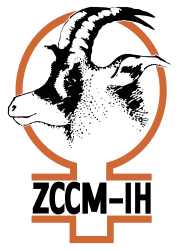ZCCM-IH has denied reports that it has sold off Ndola Lime Company.
In a statement, ZCCM-IH Spokesperson Loisa Mbatha clarified that Ndola Lime Company has ceased to exist due to huge debts and that a new company known as Limestone Resources Limited has been created.
“Over the past 8 years Ndola Lime Company Limited (NLC) accumulated an insurmountable amount of debt, in excess of K1 billion, owed to various statutory bodies as well as private creditors, which led to the Company being technically insolvent,” Ms. Kakoma said.
“In September 2018, two (2) former employees instituted business rescue proceedings in the Lusaka High Court pursuant to the Corporate Insolvency Act No. 9 of 2017,” she said.
“By order of the Court dated 5th October 2018, the Official Receiver was appointed as Interim Business Administrator of NLC. Without the prospect of recapitalisation, the Business Rescue Administration (BRA) process would effectively result in the closure of NLC’s business and loss of jobs.”
“As such, ZCCM Investments Holdings Plc (ZCCM-IH) requested and was granted an Order to convene a meeting of creditors to consider and approve a proposed Scheme of Arrangement.”
“The restructuring proposals in the Scheme of Arrangement were to:
i. Create a New Company (NewCo);
ii. Restructure the liabilities of NLC;
iii. Transfer the assets and business of Ndola Lime to the NewCo;
iv. Retrench, pay and transfer the employees of NLC to the NewCo; and,
v. Dissolve NLC with or without winding up.”
She added, “The NewCo has been incorporated and is known as Limestone Resources Limited (LRL) 100% owned by ZCCM-IH.”
“At a Final Creditors Meeting held on the 10th June 2020, the creditors passed a special resolution to approve the Restructuring Proposals as contained in the Scheme of Arrangement.”
Ms. Kakoma said the main objectives of the restructuring plan are for NLC’s successor company, LRL, to commence operations on a clean slate, debt free, recruit a new management to spearhead the re-orientation of strategy and operations without any legacy problems associated with NLC.
“The achievement of the objectives above would enable effective recapitalisation of the business. In order to preserve jobs, a recruitment exercise for LRL will commence beginning August 2020.”
“The proposed restructuring plan ensures the continuation of NLC’s business, albeit under a different entity name – Limestone Resources Limited (LRL). This new approach and plan ensures that employee welfare is prioritised, NLC’s debt is resolved, and that NLC’s core assets are secured,” she said.
“ZCCM-IH is currently in the process of obtaining statutory and other approvals to facilitate the transition of NLC to LRL. The processes of approvals, transfer, recruitment and recapitalisation will take approximately six months from August 2020.”
She said ZCCM-IH remains committed to revamp the operations at NLC, under a new entity and brand, and the proposed restructuring plan provides practical solution to the key challenges currently faced at NLC.
Sources: https://www.lusakatimes.com/2020/06/14/zccm-ih-denies-selling-off-ndola-lime/

